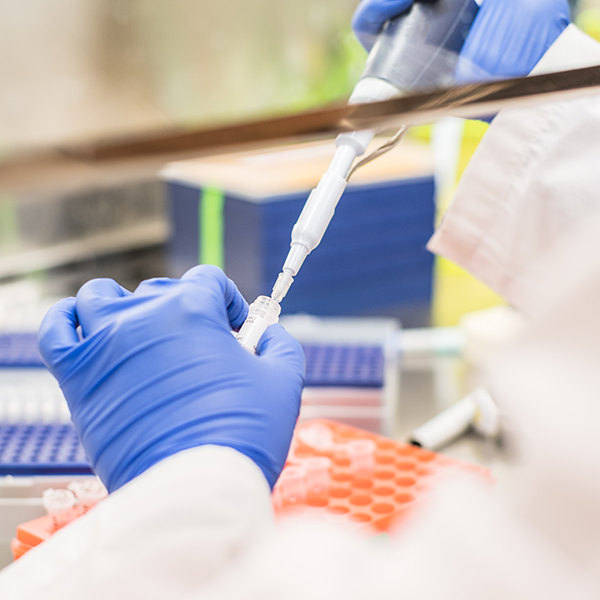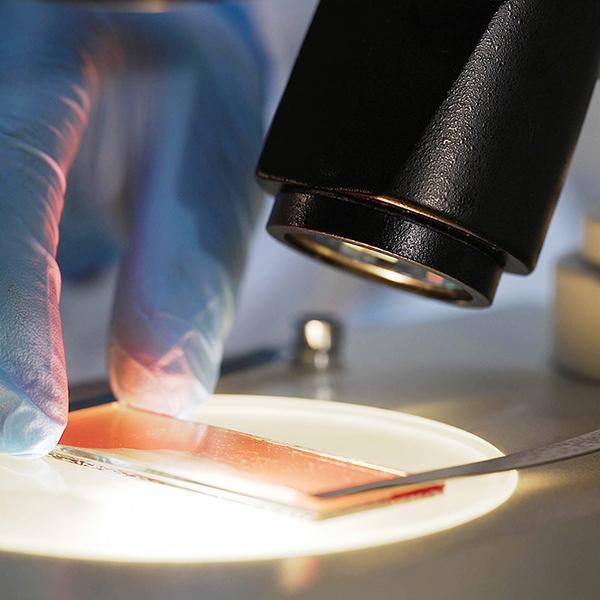
On Friday, March 28, 2025 news from Vertex came announcing that they are discontinuing one of their T1D cell therapy trials.
VX-264 is the trial of stem cell-derived islet cells that are transplanted in a macroencapsulation device (like tea leaves in a teabag) without the need for immunosuppression. Unfortunately, although the first phase of the trial was safe and well-tolerated it was not effective and therefore won’t be continued.
Read more here: https://breakthrought1d.ca/important-update-on-vertex-trials/
VX-880 (now called Zimislecel) is the same cells that are transplanted via an infusion directly into the portal vein (of the liver). This trial requires immunosuppression. This trial is progressing very well and Vertex is planning for regulatory submission in 2026.
A large area of cure-based T1D research is investigating stem cell-based therapy. The goal of this approach is to use stem cells as a renewable source of insulin-producing cells which, when transplanted, would replace beta cells that are destroyed in a person with T1D, thereby allowing them to produce insulin again. This would lessen or eliminate the amount of external insulin required by someone living with T1D (either by injection, pen, or pump) for months or even decades.
Vertex currently has two active clinical trials for type 1 diabetes cell therapy: VX-880 (FORWARD) and VX-264 (UPWARD). These are phase 1/2 clinical trials meaning that they assess both safety and efficacy of the stem cell-based product. The trials happen in 3 parts:
- Part A: small number of participants receive a partial “dose” of the transplanted cells. These participants are staggered, meaning that there was a delay of a few months before each additional participant started the trial to ensure that the participant before them was tolerating the dose well.
- Part B: following review of Part A results, a larger number of participants receive the full, target “dose” of the transplanted cells. The participants are still staggered.
- Part C: following review of Part B results, more participants receive the full, target “dose” of the transplanted cells. The participants are no longer staggered and can be dosed simultaneously.
November 2024:
On November 4th, 2024, Vertex Pharmaceuticals made an important announcement that their Phase 1/2 clinical trial for their stem cell therapy VX-880 is converting into a Phase 1/2/3 pivotal trial following successful Phase 2 review by regulatory bodies. A pivotal trial gathers the data required for a regulatory submission (to Health Canada or other regulators such as the FDA) to bring the therapy to the market. This will build upon the ongoing international trial (including 4 Canadian sites) and increase the number of participants from 37 to 50.
February 2021:
Vertex announced the launch of a Phase 1/2 clinical trial for VX-880, a stem cell-derived therapy people with T1D. VX-880 is delivered via infusion into the hepatic portal vein (liver) and requires the use of chronic immunosuppressive therapy to protect the cells from rejection or immune attack. VX-880 is being tested in people with T1D who have severe hypoglycemia and impaired hypoglycemia unawareness.
October 2021 (Part A):
Vertex announced that the first trial participant to receive VX-880 now needs 91% less insulin 90 days after receiving an infusion of these stem cells – and at just half the target dose. The success seen with just half the target dose is exciting as it suggests a lower level of this therapy may still yield positive results.
June 2023 (Part B):
Six patients have received full doses of VX-880 at staggered times over the past year and a half. Prior to treatment, all patients had undetectable fasting C-peptide (i.e., no self-secreted insulin, or insulin produced by the body), a history of recurrent severe hypoglycemic events in the year prior to treatment and required an average of 34.0 units of insulin per day.
Following treatment, all six patients are self-secreting insulin, improved HbA1c levels, improved time-in-range on continuous glucose monitoring, and reduction or elimination of exogenous insulin use (i.e., externally administered insulin either by pen, pump or multiple daily injection). Patients with greater than 90 days of follow-up also had elimination of severe hypoglycemic events. Two of the six patients are at least 12 months post-treatment and are currently insulin independent with “normal” HbA1c levels (≤6.0%) and time-in-range levels over 95%.
VX-880 has been well tolerated with only mild-moderate adverse events such as: dehydration, diarrhea, hypomagnesemia and rash.
Based on the result of these safety and efficacy data in Part B, the independent data review committee has recommended moving to Part C of the trial, which allows for concurrent dosing of patients at the full target dose of VX-880. Approximately 10 participants will be enrolled in this stage of the trial.
June 2024 (Part B/C results):
Vertex reports VX-880 preliminary results: Of the 12 patients who have been dosed, nearly all (11 of 12) have had a reduction or elimination of exogenous insulin use (via pump or injection). All patients have achieved an HbA1C below 7.0% and time-in-range above 70% on continuous glucose monitoring with the reduced or eliminated insulin administration. There have been no serious adverse events reported. The trial is expanding recruitment for 37 participants to progress towards pivotal development.Recruitment is currently ongoing in Edmonton, Toronto, Montreal and Vancouver.
Vertex VX-264: UPWARD trial
This treatment will use the same cell therapy as VX-880, but encapsulate the cells within a device designed to shield the cells from the body’s immune system. Therefore, immunosuppression is not expected to be required.
August 2024 (Part A):
Vertex reported that they have completed Part A of the trial. Results from these participants are anticipated early 2025. They have received approval to begin Part B of the trial and are currently enrolling and dosing participants. Recruitment is currently ongoing in Edmonton, Toronto, and Vancouver.
Vertex partners with Lonza (Switzerland) to build a dedicated manufacturing facility for T1D cell therapies
In June 2023, Vertex and Lonza announced that they will partner in the process development and scale-up for the manufacturing of the VX-880 and VX-264 product portfolio and co-invest to build a dedicated new facility in Portsmouth, New Hampshire. Operated by Lonza, the facility will span more than 130,000 square feet and is anticipated to create up to 300 new jobs at peak capacity. Construction is scheduled to begin later this year. For more information, please see the full press release here.
How is success of these clinical trials measured?
The primary goal of a phase 1/2 trial is to assess safety as well as efficacy of the product. Safety and tolerability are assessed by the number of adverse events. Efficacy is assessed by measuring C-peptide levels (a marker that directly indicates insulin production by beta cells), HbA1c (a measure of average blood glucose over 2-3 months), and reduction in severe hypoglycemic events.
HbA1c will also be measured
JDRF’s Role
JDRF’s involvement can first be traced back to 2000, when Douglas Melton, Ph.D. was given a JDRF grant to make insulin-producing beta cells from stem cells—which he did in 2014.
Since then:
- In 2015 Dr. Melton founded Semma Therapeutics to develop these stem cells into curative therapies for T1D.
- In 2017, the JDRF T1D Fund made a significant investment in Semma.
- In 2019, Vertex acquired Semma for almost $1 billion USD.
- In March 2021, VX-880 received fast-track designation from the US Food and Drug Administration (FDA).
JDRF globally has prioritized stem cell therapy as a potential cure-based therapy and will continue to investigate and fund the most promising research.
What does this mean for Canadians with T1D?
For cell therapy to be broadly accessible to people with T1D, the cell product needs to both work and function without or with minimal immunosuppressive therapies. The VX-880 has expanded recruitment to 37 participants to progress toward pivotal development, which is a step towards potential approval for market. VX-264 is still currently in early stages of trial. Lastly, Vertex has another product in development (not yet in clinical trials) in partnership with CRISPR Therapeutics which will include gene editing.
JDRF Canada will continue to monitor results and provide updates as they are made public.
































